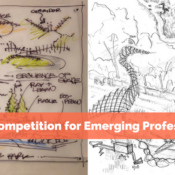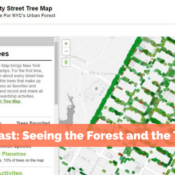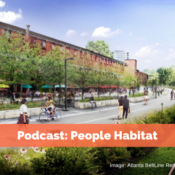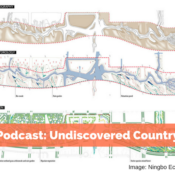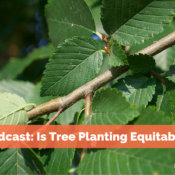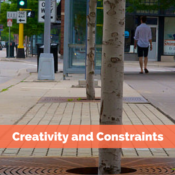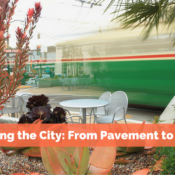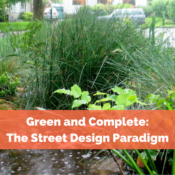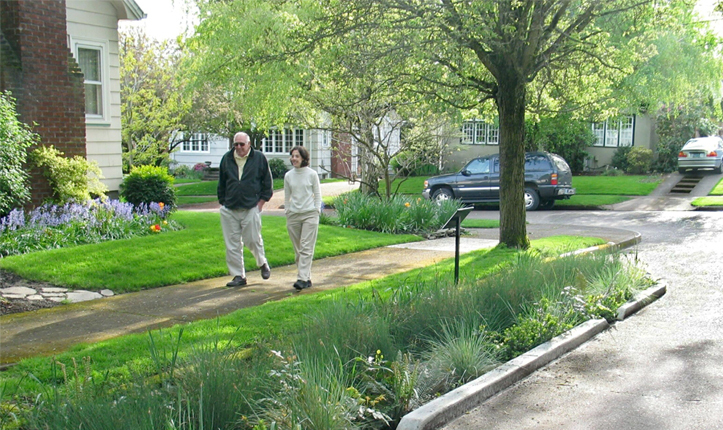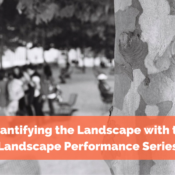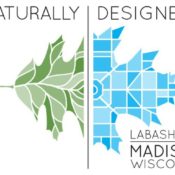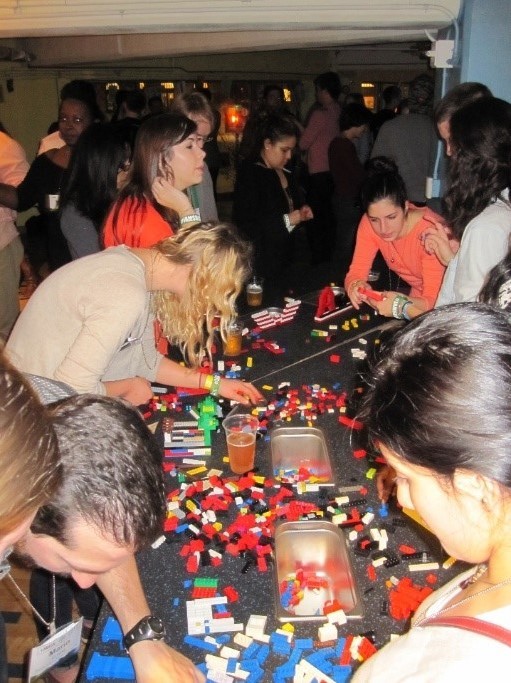Author: Stephanie Roa
10 Reasons to Attend the ASLA 2017 Annual Meeting & EXPO
Each year, over 6,000 landscape architects gather for the largest assembly of landscape architecture professionals and students in the world: the ASLA 2017 Annual Meeting & EXPO. This year’s meeting will be held October 20-23 in Los Angeles. Here are 10 reasons why you should attend.

ASLA 2016 Annual Meeting & EXPO; (Image: ASLA/EPNAC)
1. Learn outside the office (and earn credits, too)
Offering over 130 courses, including education sessions, field sessions, workshops, and general sessions, attendees are able to earn up to 21 professional development hours (PDHs). With the theme of Common Ground, this year’s session topics are centered on how design is able to bring people of difference perspectives together to find common ground for positive change. Beginning with the opening general session, A Glimpse into the Future of Design, the conference explores opportunities for social change, and how we as landscape architects can influence the future. Lecture topics vary from climate change resilience to BIM integration, and even addressing homelessness, so you’re sure to find something that interests you.
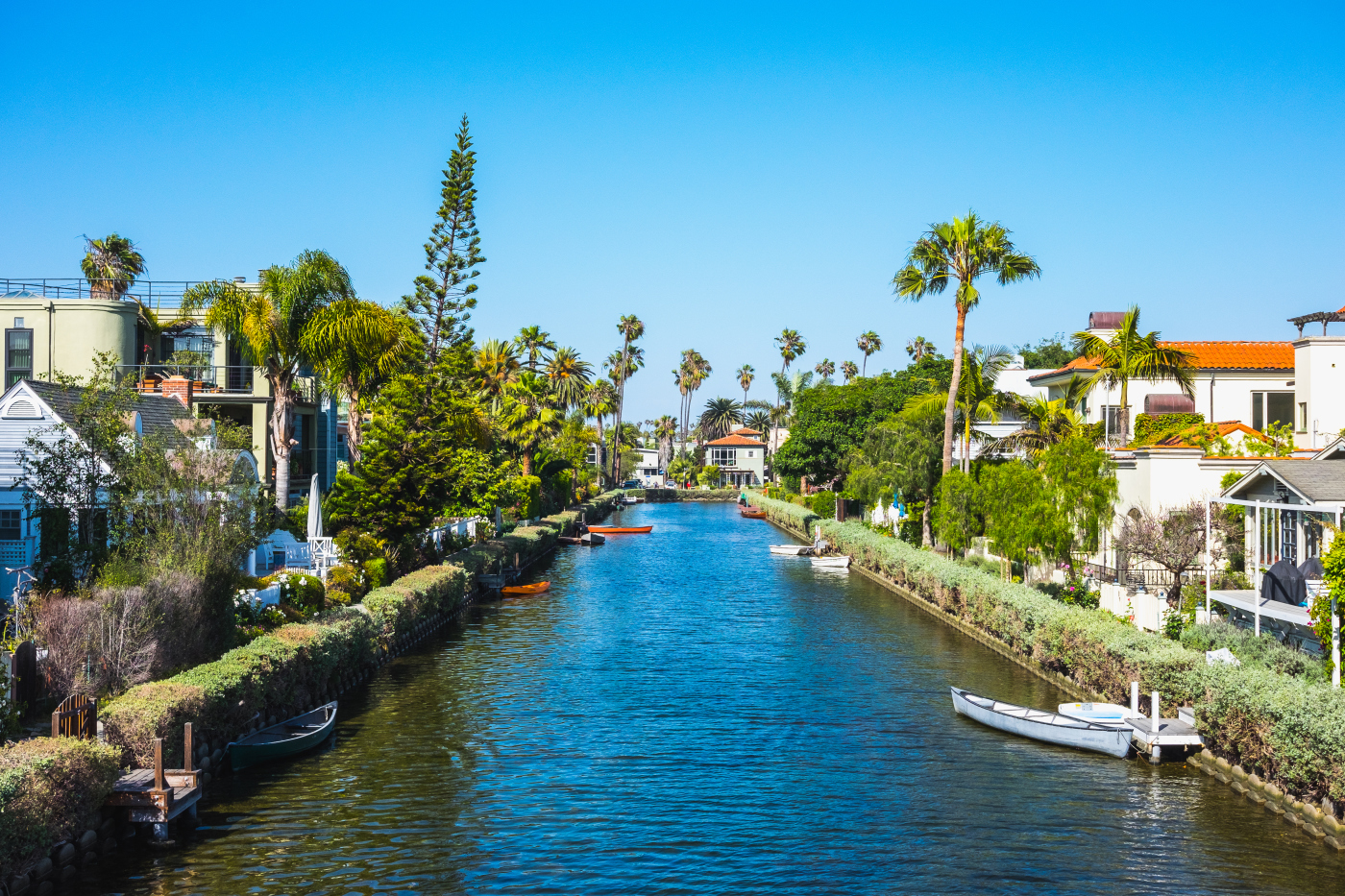
Los Angeles; (Image: ASLA)
2. Discover a new city
Held in Los Angeles, the conference provides plenty of opportunities to get outside and explore. Sign up for a field session, including sketching L.A.’s iconic movie locations, biking L.A.’s coastal waterways, or take a trip to Disneyland to learn about the magic of placemaking from Walt Disney Imagineers. Other options include taking a walking tour of the residential gardens of Brentwood and Pacific Palisades, or sitting back for a day at the beach.
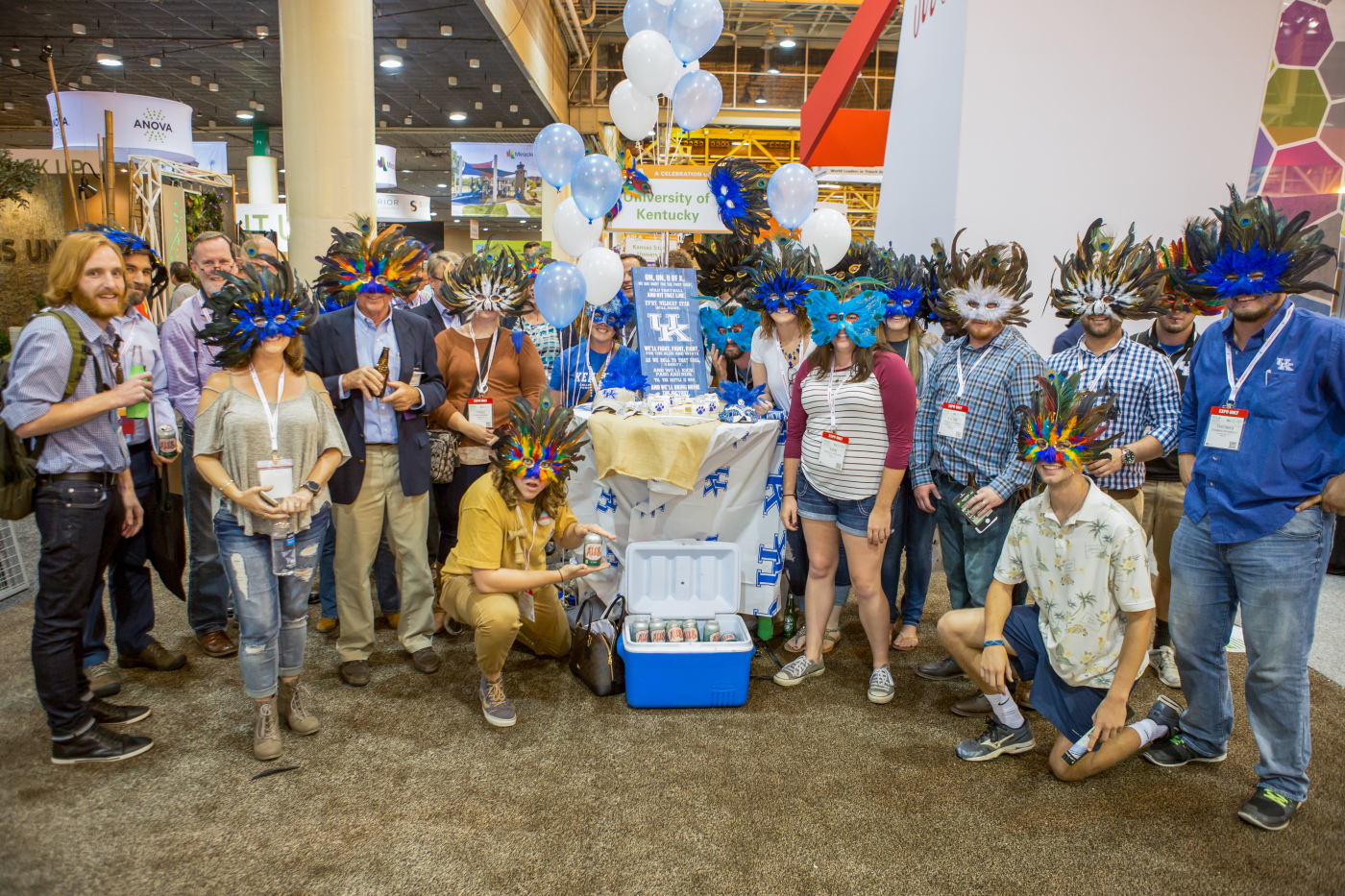
ASLA 2016 Annual Meeting & EXPO; (Image: ASLA/EPNAC)
3. Make connections
With over 6,000 landscape architects in attendance, this is a prime opportunity to make connections and gain new perspectives. Reconnect with former classmates at the Alumni Tailgate, held during Saturday’s EXPO reception, or increase your network by attending the PPN Reception, where you’ll be able to meet fellow PPN members in person. If you’re looking for a job or your firm is hiring, visit JobLink LIVE, where employers can host a tabletop display, and job-seekers can participate in interviews.
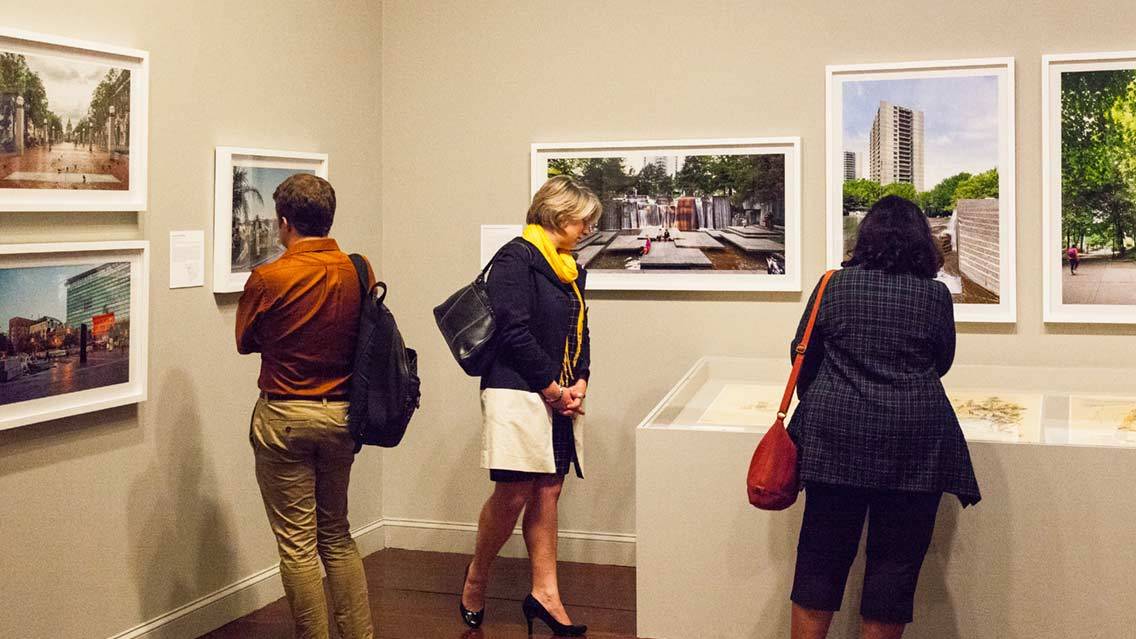
The Landscape Architecture of Lawrence Halprin (Image: TCLF)
4. Explore the work of Lawrence Halprin
While in Los Angeles, explore the work of one of the most influential landscape architects, Lawrence Halprin. Known for his focus on the social impact of design and attention to human scale, Halprin’s work left a legacy for the profession. Join TCLF for a reception at the A+D Architecture and Design Museum where The Landscape Architecture of Lawrence Halprin, a traveling photographic exhibition about his life and work, will be on view. Or, walk around and see a number of significant Lawrence Halprin postmodernist projects that are in the Los Angeles area, including the Los Angeles Open Space Network and Plaza Las Fuentes in Pasadena.
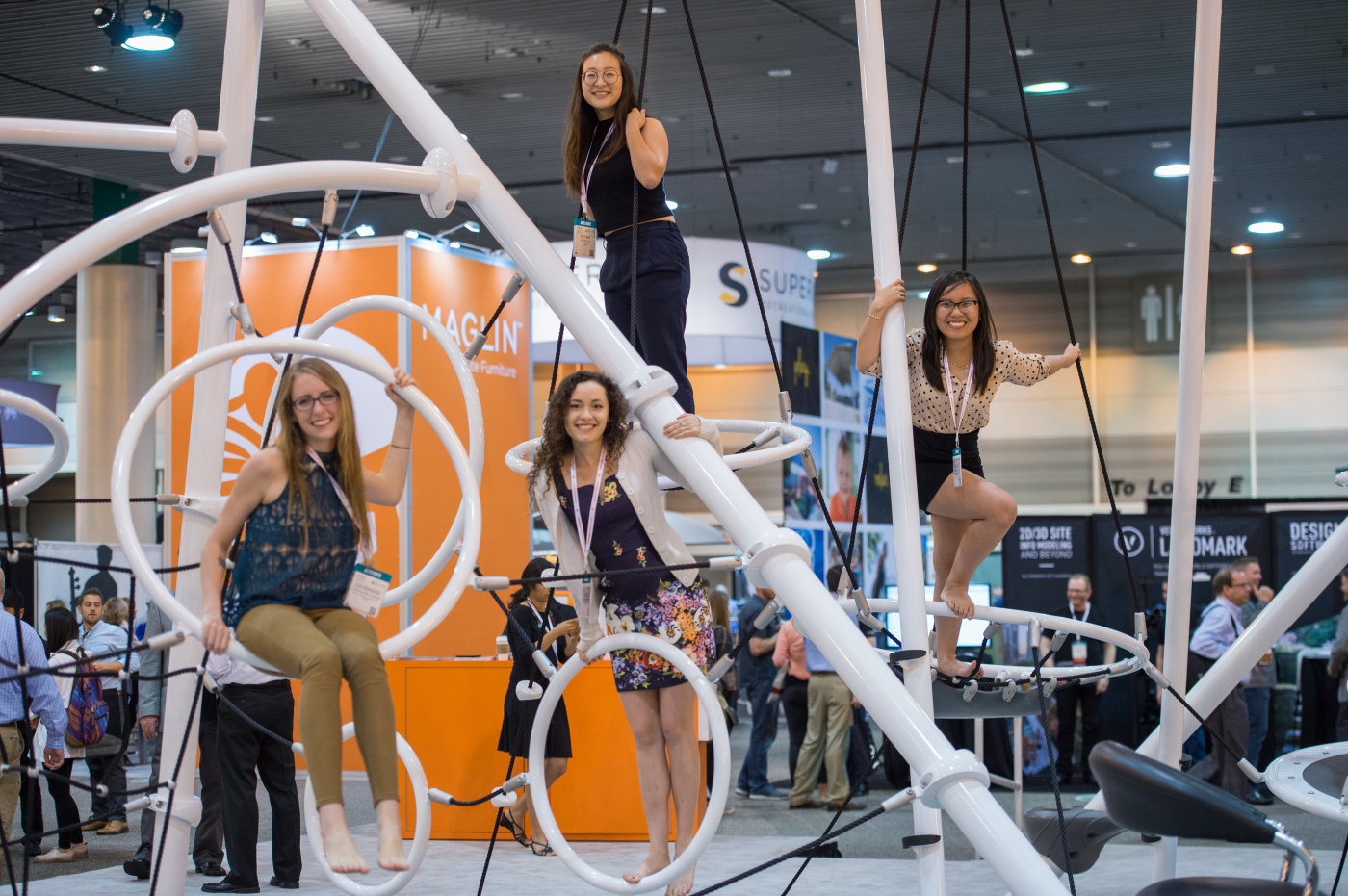
ASLA 2016 Annual Meeting & EXPO; (Image: ASLA/EPNAC)
5. Find new products and innovations at the EXPO
The ASLA EXPO is the largest trade show in the industry, with hundreds of new products, services, technology applications, and design solutions. There are several opportunities available to walk around and discover new materials to use in your future projects, or you can visit the Learning Labs to preview the latest innovations and technologies offered by exhibitors. While you’re there, take a minute to thank the generous event sponsors and partners!
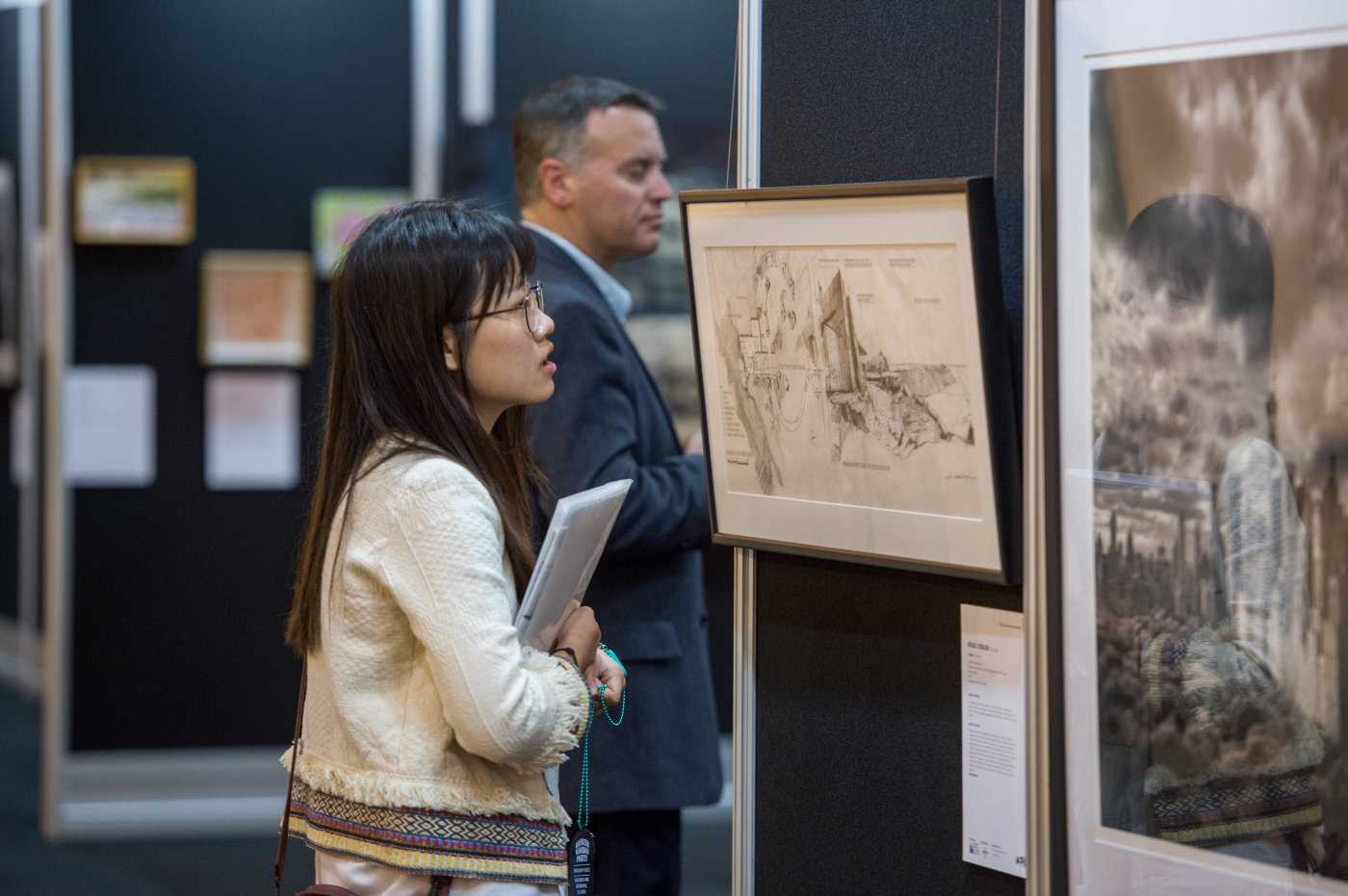
ASLA 2016 Annual Meeting & EXPO; (Image: ASLA/EPNAC)
6. Get involved
There are numerous occasions to celebrate your fellow colleagues, or donate to those working to elevate the profession. Attend the ASLA Council of Fellows Investiture Dinner to honor the newest members of the ASLA Council of Fellows, or the ASLA Student and Professional Awards Ceremony and LAF’s 32nd Annual Benefit to recognize the accomplishments of top students and professionals. Raise funds for TCLF by attending their 13th Annual Silent Auction, where proceeds will benefit the Pioneers of American Landscape Design initiative. Bid on sketches, paintings, photographs, and other items created by award winning landscape architects, photographers, and allied professionals.
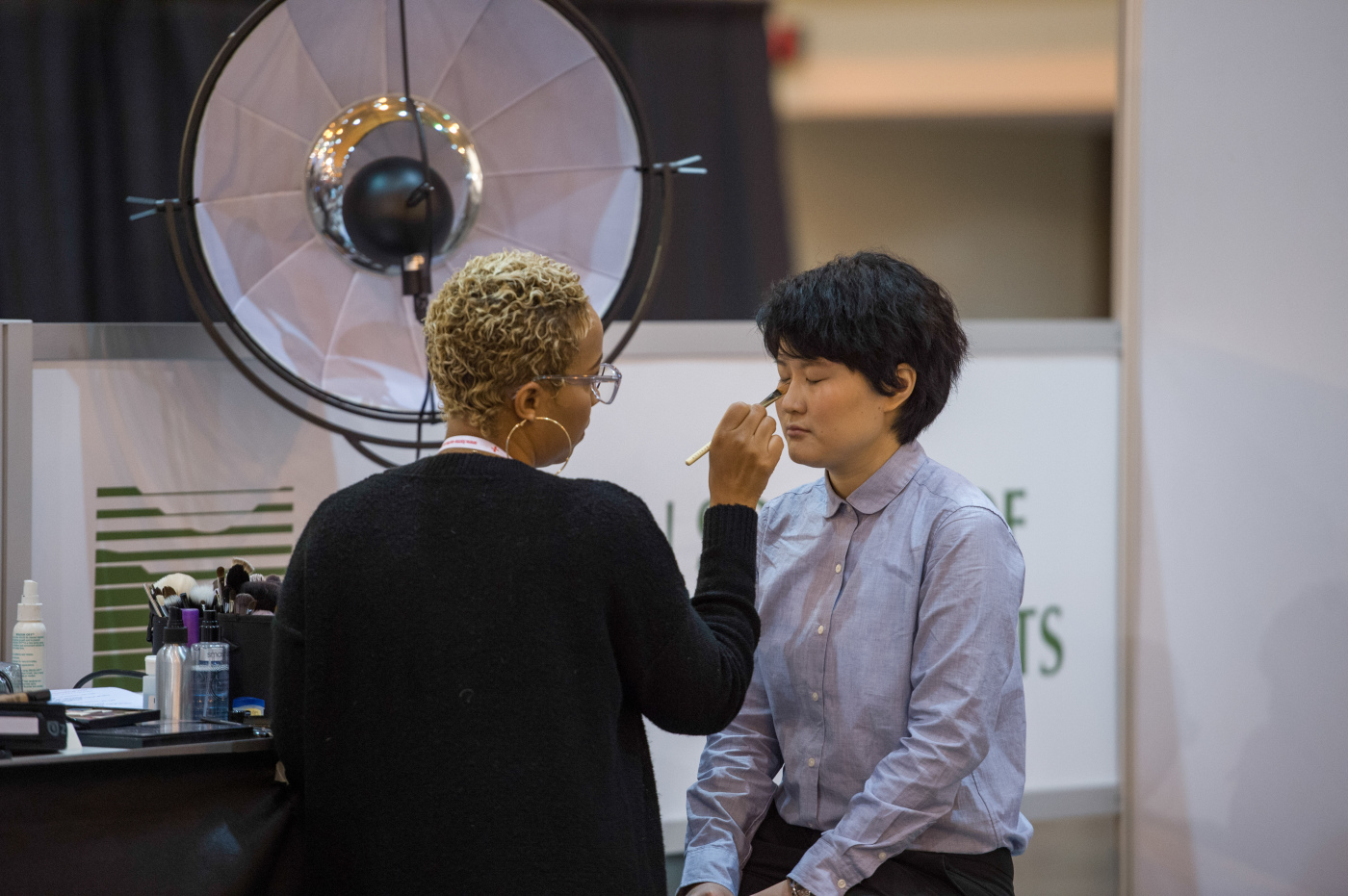
ASLA 2016 Annual Meeting & EXPO; (Image: ASLA/EPNAC)
7. Refine your skills
Whether you’re preparing for the LARE or SITES AP, have questions about LAAB accreditation, or looking to refine your digital skills, the Annual Meeting has a host of workshops catered just for you. There are a number of opportunities to refine your skills, regardless of your level of experience. Students and emerging professionals can visit the Emerging Professionals Portfolio Review to have their résumés and portfolios reviewed on-site, and ensure their making a great first impression to future employers. Professionals can take advantage of the Professional Portrait Lounge, fully equipped with professional photographers and make-up artists. Stop by to have your professional portrait taken, and walk away with your complimentary print for professional use.
8. Land8 Happy Hour
The Annual Meeting isn’t just about workshops and education sessions, it’s also about having a great time. Always a popular event, you won’t want to miss the 10th Annual Land8 Happy Hour. Held this year at Lucky Strike L.A. Live, enjoy bowling, billiards, mingling, and a DJ dance party. It’s a great chance to catch up with old friends and make some new ones in a less formal environment.

ASLA 2016 Annual Meeting & EXPO; (Image: ASLA/EPNAC)
9. Meet your inspiration
With so many distinguished landscape architects in one place, don’t be surprised if you’re a little star-struck. Learn from and get inspired by James Corner, Mikyoung Kim, Thomas Woltz, and Jennifer Guthrie – just to name a few of the well-known landscape architects that will be leading education sessions. You can also meet your design inspiration by stopping by the ASLA Bookstore, where prominent authors will be available to sign books and take photographs.
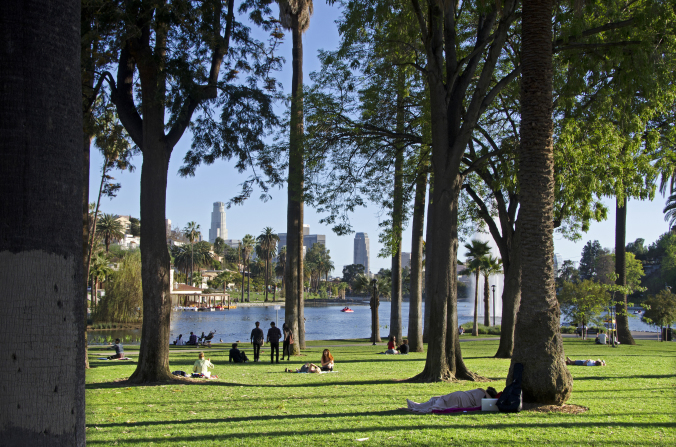
Getty Center; (Image: ASLA)
10. Get out
While you’re in Los Angeles, get out and explore the city. Check out a concert at the Frank Gehry-designed Walt Disney Concert Hall, get amused at Universal Studios Hollywood, see contemporary art at The Broad, or get a breath of fresh air at Runyon Canyon. Los Angeles has so much to offer that you’re sure to head back to work reinvigorated and ready to create something incredible.
___
Register for the ASLA 2017 Annual Meeting & EXPO at www.aslameeting.com. Hurry – early bird pricing ends June 30 MPT, and registration closes September 15th.

—
Stephanie Marino is a landscape architect practicing in Washington, DC.
Grant Competition for Emerging Professionals
Calling all emerging professionals: Get your pen out, and bring on the creative ideas. The 2017 National Grant Competition for Emerging Professionals in Landscape Architecture has just been announced! This competition, created by Anova Furnishings, will award 21 winners $2,000 to fund attendance at the 2017 ASLA Annual Meeting and EXPO in Los Angeles, CA.
The competition, which debuted last year, challenges emerging professionals to come up with and pitch their own idea, preparing them for future client meetings. Receiving over 120 entries in 2016 with the question “What change would you make in your region if money were no object?”, entrants were invited to share their vision along with a quick napkin sketch. The 21 winning entries show a diversity of ideas and the broad depth of interests among landscape architects across the US.
 Napkin sketches from winners of the 2016 grant competition.
Napkin sketches from winners of the 2016 grant competition.
This year’s topic, “Global climate change is impacting local conditions everywhere – how should Landscape Architects respond?” is particularly pertinent. Entrants are asked to submit a 500-word essay, a quick napkin sketch, and a 140-character summary. The sketching component is intended to harness a landscape designer’s ability to quickly and effectively communicate their ideas. A jury of three practicing landscape architects decide on the winners based on four criteria: originality and creativity, written communication, the napkin sketch, and disciplinary positioning.
A profession trained in ecology and design, landscape architects are well-suited to tackle the big environmental issues of today, such as climate change, heat islands, and sea level rise. One of the four judging criteria, disciplinary positioning, focuses on this very topic. As stated in the grant FAQs, entries “should help elevate the perception of landscape architecture as a discipline that catalyzes positive change.” This grant is an opportunity to showcase the profession and its ability to help solve today’s challenges.
 First place winner, Zheng Lu of EDSA designed this self-sustaining island in Florida that generates enough solar, wind, and water energy to power inland development.
First place winner, Zheng Lu of EDSA designed this self-sustaining island in Florida that generates enough solar, wind, and water energy to power inland development.
Based in St. Louis, Missouri, Anova Furnishings has been around for over 40 years as innovators in the design and manufacturing of outdoor furniture. Long-time supporters of the landscape architecture profession, Anova created this grant to accelerate emerging professionals’ careers. Eric Gilbert, CEO of Anova, says the grant came to mind as the company asked themselves: “How are we going to help and impact this industry in a way that is meaningful, fun, and different?” Providing emerging professionals a platform to share their ideas ideas and the opportunity to learn from others at the ASLA Annual Meeting, the competition accelerates personal growth.
Eric believes that attending the ASLA Annual Meeting is particularly beneficial because it is “a place to get new ideas, and a fantastic platform to get out of your office space and go explore something new.” With over 100 education sessions and workshops, and the largest gathering of landscape architecture professionals and students in the world, the ASLA Annual Meeting certainly is an incredible opportunity to learn, engage, and inspire each other. With such a great prize available, why not share your ideas?
Submissions are accepted beginning April 1st and will remain open until April 30th. For more information and to submit your entry, visit the competition website.
Why attend the ASLA Annual Meeting? Read Land8’s recap of the 2016 Annual Meeting and EXPO.
Podcast: Seeing the Forest and the Trees
Imagine having access to every street tree in your city, essentially having the urban forest at your fingertips. The New York City Street Tree Map does just that, giving users access to information about every street tree in New York City. The map shows the location of every single tree, in all five boroughs, along the city’s sidewalks and streets, with information such as size and ecological benefits of each tree. In the final episode of Remarkable Objects, we learn about the effort that went into building this robust program, and its advantages, from Jennifer Greenfeld, Assistant Commissioner for Forestry, Horticulture, and Natural Resources at the New York City Department of Parks & Recreation.
New York City recruited over 2,200 of its residents to assist in the census of the city’s street trees— over half a million in all (683,993 as I write this post). This community-driven effort utilized a low-cost, simple method, established by TreeKIT, to map trees. Using a surveyor’s wheel to locate the tree and a smartphone to record data about the condition and species of the tree, volunteers were easily able to map their streets. Training sessions took place to help the volunteers, especially in tree identification and condition. While similar data has been collected in the city before, this is the first time the data was made public, and charted on an interactive map. Other cities have been collecting data on their trees too, such as Washington, D.C. and San Francisco, but the NYC Street Tree Map is a uniquely accessible tool, and the world’s most accurate and detailed map of a city’s street trees.
 Volunteers collected data on each street tree. Image courtesy of NYC Parks.
Volunteers collected data on each street tree. Image courtesy of NYC Parks.
As Jennifer puts it, this dynamic tool essentially allows for the managing and planning for nature in the city. Jennifer says of the easy-to-follow website, “We knew that if we were really going to be serious about engaging people, we needed to give them a better platform to work on.” The map is a way of visualizing and sharing the information that is used to manage New York City’s urban forest every day. The site allows users to report problems, record a caretaking activity, or request a tree planting, inviting the public to interact with their urban forest in ways that may have previously gone unnoticed. Recently completed tree care activities, such as pruning or mulching, are recorded and listed on the website, allowing clear communication between the department and the public. Ideally, the data collected will inform future care and tree-planting efforts, and allows the department to reach the trees that need care.
The effort has not only been valuable for managing trees, but also for engaging citizens, both during the data-gathering period and afterwards, as caretaking is needed. To promote data collection, volunteers were encouraged with special tree-counting days, a Guinness World Record event, and a recognition event. The map is a living document, constantly being updated based on these citizen’s activities and requests. The website is also engaging, sharing information on tree care tips, stewardship groups in the area, and tree planting events. The website also allows users to mark trees as favorites and share them with their friends, bringing tree hugging into the 21st century.
 This massive 121″ London Planetree was mapped by volunteers in the Bronx. Fun Fact: The most common street tree species in NYC is the London Planetree, making up 13% of trees on the Street Tree Map. Image courtesy of NYCTreesCount.
This massive 121″ London Planetree was mapped by volunteers in the Bronx. Fun Fact: The most common street tree species in NYC is the London Planetree, making up 13% of trees on the Street Tree Map. Image courtesy of NYCTreesCount.
In addition, the data collection effort allowed the city to quantify the benefits these street trees provide to the city. Based on a formula developed by the Center for Urban Forest Research, an individual tree’s environmental and economic benefits were calculated depending on its species, size, and location. For example, a single Japanese Pagoda tree on Old Fulton Street in Brooklyn conserves 1,499 kWh of energy each year, valued at $189.29 in yearly savings. Collectively, these benefits include over 1.1 billion gallons of stormwater intercepted each year, and over half a million tons of carbon dioxide reduced each year, totaling $111,186,737.92 of annual savings – and counting.
According to the 2016 census, there are 12.5% more trees in the city than there was when the last census was taken, in 2006. There are, of course, still parts of the city that are lacking tree cover. Jennifer said there are more than 200,000 planting spaces that are currently empty where trees could go. This is where the data is particularly useful, both as a database for locating where trees are needed, and as a tool for expressing the many benefits tree plantings provide. Being able to show that trees improve the health of a city in a measurable way makes it easier to advocate for the growth and caretaking of the urban forest. Jennifer hopes the data will help build more advocacy and awareness for the city’s street trees and what they provide.
—
Episode 8 is the final episode of Remarkable Objects, a podcast about the intersection of nature and urban design, hosted by Leda Marritz, Creative Director at DeepRoot. I hope you have enjoyed my reviews of each episode, as part of the DeepRoot and Land8 partnership. If you’ve missed an episode, listen on Soundcloud or iTunes.
Stephanie Marino is a landscape architect practicing in Baltimore, Maryland.
Podcast: People Habitat
From New York’s High Line to Atlanta’s BeltLine, transit revitalization projects are popping up all over the U.S., and beyond. High-speed roadways, outdated railways, and abandoned subways are being replaced or modified to make room for bicycle lanes, expanded outdoor seating areas, plantings, and pedestrian zones. Once seen as crime-ridden, polluted, and congested, cities are now bustling with economic growth and development that constantly innovates. Are we witnessing the comeback of our inner cities? Kaid Benfield, a longtime leader of the smart growth movement, believes that we are inching towards the right kind of development – creating great places for people and for the environment. In Episode 7 of Remarkable Objects, Kaid touches on how land use practices are changing in a positive way, and how all community members play a part in making cities better.
Named one of “the most influential people in sustainable planning and development” by the Partnership for Sustainable Communities, Kaid Benfield has a commitment to forward-thinking approaches to environmental challenges. Kaid serves as senior counsel for environmental strategies at PlaceMakers LLC, a planning firm that helps communities make their neighborhoods better. He is also co-founder of USGBC’s LEED for Neighborhood Development, a national rating system aimed at creating more sustainable neighborhoods, and co-founder of Smart Growth America, a nation-wide coalition working to revitalize cities.
In his most recent book, People Habitat: 25 Ways to Think About Greener, Healthier Cities, Kaid advises us on how to make cities and neighborhoods work better, for both people and the environment. He admits that in the past, cities were not built for its residents. They were centers of pollution and roadway corridors that brought people from their homes in the suburbs to their jobs in the city. Kaid states: “We didn’t do very well by our cities in the 1960s, 1970s, 1980s, and it wasn’t really until the dawn of the 21st century that I think we had a critical mass of people who said, “Wait a minute, there’s a lot about city living that’s really attractive.” It is only until recently that we “woke up” and came to the realization that cities needed to be designed with people, rather than industrialization, in mind.
Today, more public spaces are becoming pedestrianized, and our roadways and outdated infrastructure are being reimagined as parkways. Urban revitalization projects have transformed run-down cities into thriving communities. For example, Over-the-Rhine, a historic working-class neighborhood in Cincinnati, was labeled the “most dangerous neighborhood” in 2009, with one of the highest rates of abandoned and vacant homes in the country. Investment in new buildings, the rehabilitating of parks, and the development of vacant lots has driven out criminals, while maintaining subsidized housing and preserving the historic charm.

Over-the-Rhine’s transformation Image courtesy of Mark Peterson/Redux Pictures for Politico Magazine.
Kaid emphasizes lovability as a key component of sustainability, stating: “It’s the places that we love that are going to last.” He suggests that the integration of nature into cities is part of what makes them lovable and attractive. Having places where communities can gather is important not only for the improvement of the built environment but also for the mental and physical health of human beings. Having more public spaces for people creates better cities.
There are still many problems within the design of our cities left behind from the sprawl era. Innovative strategies will need to be developed to repair our cities and create places for people. Kaid works with cities to change zoning codes and planning documents to match the goals that they have for their residents. By helping community leaders, designers, policy makers, and others understand what tools are available to them, they are able to make the right decisions to better their city. The work done by Kaid and others like him is slowly changing the fabric of our cities, balancing the human and natural landscape, and creating spaces for people.
—
Remarkable Objects, hosted by Leda Marritz, Creative Director at DeepRoot, is a new podcast about the intersection of nature and urban design. In each episode, we will hear from leaders and innovators whose work aims to influence the way we think about, design, and build the urban environment.
Remarkable Objects will air every-other Wednesday for the course of the eight-episode season. Check back in two weeks: I will be providing reviews of each episode, as part of the Deep Root and Land8 partnership.
Listen to the full episode here, and subscribe on Soundcloud or iTunes.
Podcast: Undiscovered Country
Soil is capable of carrying immense loads, supporting plant growth needed for urban environments and food security, sequestering CO2, mitigating stormwater runoff, and is home to billions of organisms and biological processes. Despite how incredible this natural resource is, soil is often an overlooked feature of our landscape. Its care and preservation are rarely considered in the development process, however its health is extremely important. During Episode 6 of Remarkable Objects, we learn about this ‘undiscovered country’ right below our feet from Jonathan Russell-Anelli, a pedologist and faculty member at Cornell University.
Soil is the medium on which much of our infrastructure is built. However, treating it as a foundation for infrastructure can mean sacrificing its other important properties. The disturbance and compaction of soil during construction and other human activity disrupts the ability for soil to perform two of its main functions: support plant life and absorb stormwater runoff. As Jonathan remarks, “At this point, I don’t think there is any landscape of the world, or waterscape of the world for that matter, that really has not been impacted to some point by humans.” As cities continue to grow to meet the needs of an increasing urban population, this issue assumes even greater importance.
In urban environments, soils are particularly affected by development, leading to soil compaction. This reduces the infiltration rates of soil and the ability for plants to grow. In addition, paved surfaces and rooftops contribute to increased urban runoff, which causes soil erosion and pollution of our waterways. Healthy soils, with good permeability and infiltration, are able to play a critical role in combatting these issues. Implementing larger tree pits or using suspended pavements along streetscapes, as well as converting underutilized space into productive open space, would provide a place for plants to thrive and allow water to infiltrate into the soil, reducing negative environmental impacts.
 Photo: Ningbo Eco-Corridor by SWA
Photo: Ningbo Eco-Corridor by SWA
Caring for soil has important economic benefits as well. As previously stated, healthy soils produce healthy plant life. Street trees are more able to establish themselves, live longer, and require less maintenance when planted in healthy soils. Also, using soil as part of a site’s stormwater management system can reduce the costs of piping and other drainage infrastructure. For these and other reasons, investing in soils is critical to the success of any project.
In addition to compaction and erosion, contamination is another problem appearing in urban environments. Sites have become contaminated by waste and heavy metals due to prior industrial uses and runoff. Brownfield redevelopment, or the cleaning of contaminated soil, is not an easy task, but it is extremely important one. Ningbo Eco-Corridor, is one example of a project that utilized the site’s topography, hydrology, and vegetation to transform an environmentally damaging brownfield into a resource that filters toxins, provides habitat, and enhances public health. Another celebrated example of repurposing a previously contaminated site into a public amenity is Gas Works Park in Seattle, Washington. Formerly a coal gasification plant, bioremediation processes allowed the soils to be amended, and turned an under-utilized space into a popular public park, while maintaining the site’s historic significance.
 Photo: Gas Works Park in Seattle, Washington; The Cultural Landscape Foundation
Photo: Gas Works Park in Seattle, Washington; The Cultural Landscape Foundation
This episode brings attention to the importance of soil, the need for a better understanding of its complex systems, and the urgency of which it needs protecting. In the podcast, Jonathan mentions the need for a movement to soil quality regulations, or a Clean Soil Act, similar to the Clean Air Act and Clean Water Act that exist today. The creation of a soil management plan will ensure that we take the proper care in protecting this dynamic living system as we do for other important resources. In the meantime, may you, the reader, lead the way in educating your colleagues, clients, and agencies, about the need for healthy soils. If we consider the health of soils as we build, hopefully we can make it easier for soils to perform the processes that improve our quality of life and the environment.
—
Remarkable Objects, hosted by Leda Marritz, Creative Director at DeepRoot, is a new podcast about the intersection of nature and urban design. In each episode, we will hear from leaders and innovators whose work aims to influence the way we think about, design, and build the urban environment.
Remarkable Objects will air every-other Wednesday for the course of the eight-episode season. Check back in two weeks: I will be providing reviews of each episode, as part of the Deep Root and Land8 partnership.
Listen to the full episode here, and subscribe on Soundcloud or iTunes.
Podcast: Is Tree Planting Equitable?
Safer streets, cleaner air and water, healthier communities, and a more vibrant economy are all benefits derived from increasing a city’s street trees. As discussed in previous episodes, the importance of urban tree canopy cover is well documented. However, in this week’s episode of Remarkable Objects, “Is Tree Planting Equitable?”, we hear about the inequity of neighborhoods receiving these benefits.
Episode 5 highlights the work of Shannon Lea Watkins, who explored the topic of tree canopy equity while earning her Ph.D. in Public Affairs from the School of Public and Environmental Affairs at Indiana University, Bloomington. In her dissertation “Trees, communities, and equity: Nonprofit tree planting and the coproduction of urban forests,” Shannon examined the role of communities and non-profits in urban forest management. Her later study, “Is planting equitable?”, further delved into the topic, examining where street trees are planted across neighborhoods of varying ethnicities and household income levels. Shannon’s research is aimed at answering the question: “Do non-profit groups plant trees ethically?”. Her studies aim to ensure that trees are being planted where they are needed most— in communities with lower tree canopy cover, lower median income, and a higher number of minority residents. Using data collected from four urban greening non-profit organizations in the Midwest and Eastern United States, Shannon examined the spatial distribution of tree-planting projects and found that disparities may exist.
The research showed that while tree planting programs are more likely to occur in neighborhoods as existing canopy cover and income level decrease, they are less likely to occur as the percentage of racial and ethnic minorities increases. For example, findings show that as the African American population of a neighborhood increased by 1 percentage-point, the probability of the neighborhood having a tree planting program decreased by as much as 2.5 percentage points. In addition, when canopy cover or income was low, tree plantings were even less likely to have occurred in neighborhoods with high percentages of racial or ethnic minorities. This research suggests non-profit tree planting programs might reduce existing income-based inequity in canopy cover, but are not reducing race-based inequity and risk leaving low canopy minority neighborhoods with relatively few program benefits.
So, what are the drivers of this inequity? Shannon outlines four factors that may have affected where non-profits planted trees. First, the physical suitability of the site, such as a lack of existing tree-pits, may have impacted the ability for trees to be planted. Second, unavailable funding sources could be an influencing factor. Third, minority residents may not have known about the resources available to them, leading to a lack of neighborhood interest or understanding. Finally, the capacity of the urban greening non-profits may not have realized or been able to address this inequity.
If inequity is occurring in the pre-application process, the solution may be to reach out to these communities and provide resources to non-profits to further their capacity. However, even if residents are made aware of the non-profit tree planting programs, there are many steps within the process which could inhibit plantings in neighborhoods of high African American or Hispanic minority residents. For example, the requirement to fill out an application may have disincentivized minority neighborhoods to apply. Applications in English only or requiring specific documentation, such as photos of the empty tree pit, could inhibit residents. Support through the application process is critical to help residents get the information needed for the applications. Other barriers within the community could be a lack of maintenance for existing trees that causes residents to be less interested in more trees. Maintaining trees in the long-term is key to the success of sustainable urban forests. Also, inequality could have occurred within the selection process, with overt or covert actions taking place at the non-profit that prevents minority neighborhood selection. If the neighborhoods are not being selected due to lack of tree-pits, the solution may be including the creation of tree-pits as part of the tree-planting programs.
Shannon realizes that we need to work to better understand and serve the needs of minority communities, to gauge interest in tree-planting programs, and determine how to help establish or further the programs. The studies only speculate the causes of this inequity and suggests further research to identify and address obstacles. Shannon recommends that non-profits target low-income, minority, low-tree canopy neighborhoods in their process.
The findings also reveal that non-profit planting programs that engage residents might yield positive outcomes by strengthening communities and overcoming barriers to participation of minority neighborhoods. Collectively, the results suggest that neighborhood groups can play a strategic role in urban forest management.
Ultimately, this is a question of environmental justice. All residents should have equitable access to environmental goods, but if residents have unequal access to urban forests, then they have unequal access to the benefits they provide. This inequity can lead to significant effects on health and well-being. Shannon makes a point to mention that “we see inequity in canopy cover and if we think about environmental injustice or environmental racism, that speaks to that problem. That need not come from explicitly, intentionally racist acts, but the result is still unequal and problematic.” Empowering minority neighborhood residents and listening to their needs will help to ensure they are receiving equal treatment. Providing residents with access to the tree-planting process and influence in decision-making will help ease this disparity and ensure benefits for all.
Shannon is currently a Postdoctoral Fellow at the University of California, San Francisco. To learn more about her research, read “Trees, communities, and equity: Nonprofit tree planting and the coproduction of urban forests” and “Is Planting Equitable?”.
—
Remarkable Objects, hosted by Leda Marritz, Creative Director at DeepRoot, is a new podcast about the intersection of nature and urban design. In each episode, we will hear from leaders and innovators whose work aims to influence the way we think about, design, and build the urban environment.
Remarkable Objects will air every-other Wednesday for the course of the eight-episode season. Check back in two weeks: I will be providing reviews of each episode, as part of the Deep Root and Land8 partnership.
Listen to the full episode here, and subscribe on Soundcloud or iTunes.
Creativity and Constraints
Remarkable Objects, hosted by Leda Marritz, Creative Director at DeepRoot, is a new podcast about the intersection of nature and urban design. In each episode, we will hear from leaders and innovators whose work aims to influence the way we think about, design, and build the urban environment. (Lead Photo: Marquette & 2nd Avenue Busway Project by Alyn Divine for DeepRoot)
With the threat of unpredictable weather and increased rainfall intensity, officials are adapting their cities’ infrastructure to a changed climate. Similar to other parts of the country, Minnesota cities have been focusing their efforts on stormwater systems, moving away from their dependence on traditional storm sewer systems and towards a more natural approach. While the concept of accommodating stormwater management on-site through the use of green infrastructure is becoming more common, Minnesota has gone further, recognizing the important role that street trees and soils play. They are the only state that we know of that has done this, and it could completely change not only how we manage water, but also how well we sustain the urban forest.
In Episode 4, Creativity and Constraints, we hear from Randy Neprash, a civil engineer and stormwater regulatory specialist at Stantec. When nearly 160 Minnesota cities faced new mandates related to stormwater runoff, Neprash recognized that practitioners would need assistance implementing the new regulations. As a result, he established and maintains the Minnesota Cities Stormwater Coalition, which provides help to cities in implementing stormwater management techniques to meet various federal and state requirements.
The Minnesota Stormwater Manual offers guidelines, recommendations, and tools that will support the implementation of green infrastructure more uniformly across Minnesota’s cities. A number of shared resources area available, such as a calculator that quantifies the benefits of different Best Management Practices (BMPs). The calculator includes practices for green roofs, bioretention basins, infiltration basins, permeable pavement, infiltration trench/tree box, swales, filter strips and sand filters. This tool and makes it easier for practitioners to quantify the benefits of their work, and show how solutions contribute to stormwater goals.
The manual includes a section for Urban Tree BMPs to meet statewide regulatory stormwater standards. The manual formally recognizes street trees, and the soil they grow in, as a best management practice for stormwater regulations. In other words, Minnesota is combining stormwater management with urban tree canopy growth, addressing two urgent urban design needs in one regulation.
An example of an urban street tree project in Minneapolis, Minnesota. (Photo: Marquette & 2nd Avenue Busway Project by Alyn Divine for DeepRoot)
Neprash is a huge advocate of using urban trees as a stormwater management technique. Among the many benefits of trees is their ability to slow down and capture rainfall. However, planning for tree planting and planning for stormwater management are rarely connected. Pooling the planning and budgets for these two functions can help reduce overall costs and maximize the benefits of both.
In urban environments, where there is not enough open space for traditional bioretention, the use of tree trenches and tree boxes can be key to manage stormwater runoff. These tree BMPs are also an important component of urban forestry, increasing the number of trees within an urban area. Soil volume is generally a concern in these settings, as trees are often planted in constraining tree boxes that do not fair well for the growth of the tree or provide stormwater management benefits. In areas that do not have enough open space, planting techniques like suspended pavement and structural soil can be used to protect soil under pavement from compaction, creating an increased soil volume for bioretention and favorable conditions to grow large trees.
Minnesota’s coordinated approach to water quality management is widely viewed as among the best in the nation. The guidelines are leading to changes in how professionals practice, and a better understanding of stormwater BMPs in urban environments. By coordinating stormwater management with tree canopy growth, we will see much healthier and greener urban settings.
Remarkable Objects will air every-other Wednesday for the course of the eight-episode season. Check back in two weeks: I will be providing reviews of each episode, as part of the Deep Root and Land8 partnership.
Listen to the full episode here, and subscribe on Soundcloud or iTunes.
Hacking the City: From Pavement to Parks
Remarkable Objects, hosted by Leda Marritz, Creative Director at DeepRoot, is a new podcast about the intersection of nature and urban design. In each episode, we will hear from leaders and innovators whose work aims to influence the way we think about, design, and build the urban environment. (Lead Photo: Jane Warner Plaza by Seth Boor)
In Episode 3, Hacking the City, we discover how San Francisco residents have been able to reimagine the potential of their city streets through the use of parklets. Robin Abad Ocubillo, urban designer with the San Francisco Planning Department, explains how parklets have generated meaningful public spaces for people, and lead to a transformation of the city.
The concept of parklets began in 2005 when Rebar, a San Francisco art and design studio, converted a single metered parking space into a temporary public park in an underserved area of the city. Their mission was to challenge existing notions of public space, calling attention to the disproportionate amount of public land being allocated to cars instead of people. This small intervention sparked conversation about the need for better investment in urban open space. The concept resonated with so many that an annual worldwide event, PARK(ing) Day, has evolved since, with local community members, students, and designers coming together to create their own temporary public parks from parking spots.
The parklet movement invigorated the San Francisco Planning Department too. San Francisco’s streets and public rights-of-way make up 25% of the city’s land area; more space than all the public parks combined. As emphasized by Ocubillo in the podcast, “The way that we allocate space in our public realm is unbalanced and we need to rebalance the way that our streets are configured.” Recognizing the inadequate amount of space being allocated to serve a broader range of public needs, efforts have begun to bring the streets back to the public. Ocubillo, has headed this transformation as the lead policy planner of the city’s Pavement to Parks program. This program seeks to test the possibilities of these underused areas of land by quickly and inexpensively converting them into new urban open spaces.
Under the Pavement to Parks program, San Francisco’s first parklets were installed throughout 2010. These five pilot projects were situated in four different neighborhoods of San Francisco. Every year since 2010, more parklets have appeared around the city under the sponsorship of nonprofits, small businesses, neighborhood groups, and others. Today, there are over 60 parklets all over the city that elevate the pedestrian experience, providing both a safer and more social streetscape.
Among the first of Pavement to Parks parklet project, The Noe Valley Parklets 1&2 repurpose parking spaces into a café zone. (Photo: Noe Valley Parklets by San Francisco Planning Department)
The incredible flexibility provided by the parklet format allows each design to be customized, responding to individual community needs. Each Pavement to Parks project is initiated, designed, and maintained by citizens. These pedestrian-centric designs, encourage the involvement of local community members, and empower individuals to redefine their public space. “They are ways that everyday citizens, and residents, and small business owners can be directly engaged in shaping how their neighborhoods that they inhabit every day…look and feel, and that their neighborhoods are working for them,” says Ocubillo. Each parklet has its own story and unique personality, tied seamlessly to its neighborhood.
The parklets are adaptable, and able to address a variety of social issues in diverse urban contexts. They have become a testing ground for the city to work with local communities to explore the range of possibilities for urban public space. Materials and design interventions are meant to be temporary and easily reversible, should the parklet demonstrate the need for design changes. After testing their performance, some spaces are reclaimed permanently as public open spaces. The parklets have become a public commons, fostering neighborhood interaction, cultural expression, and play.
This parklet, dubbed ‘Event Machine’, at 730 Montgomery Street features a modular stage can readily host public talks, panel discussions, workshops, screenings, and more. (Photo: Swissnex “Event Machine” Parklet by Stella Kim)
This movement has spurred innovation and created new forms of temporary public space in urban contexts. Currently, the city relies on sponsor groups to pay for generating the design, installing the parklet, maintaining it, and programing the space with public events. In the future, San Francisco city officials plan to pass legislation that will make it easier for citizens to apply for and create parklets. Formalizing the program will help clarify the process and define responsibilities between communities, organizations, and the city. Ultimately, Ocubillo sees parklets as an opportunity to improve the quality of urban life, and hopes these small design interventions will have a big impact, especially in the neighborhoods that need it most.
Remarkable Objects will air every-other Wednesday for the course of the eight-episode season. Check back in two weeks: I will be providing reviews of each episode, as part of the Deep Root and Land8 partnership.
Listen to the full episode here, and subscribe on Soundcloud or iTunes.
Green and Complete: The Street Design Paradigm
Remarkable Objects, hosted by Leda Marritz, Creative Director at DeepRoot, is a new podcast about the intersection of nature and urban design. In each episode, we will hear from leaders and innovators whose work aims to influence the way we think about, design, and build the urban environment.
In Episode 2, The Mighty Green Street, we hear from Robert Goo, an Environmental Protection Specialist in the Office of Water for the U.S. Environmental Protection Agency (EPA). Goo’s work centers on changing the way we design our cities and manage our water resources. Goo has spent nearly 30 years promoting green infrastructure approaches for water sensitive design.
Green infrastructure is a stormwater management approach that manages the hydrology of a site more naturally. The conventional method of directing stormwater runoff from impervious surfaces into storm sewer systems is inadequate, as it does not protect water quality and quantity. Goo is working to shift the standard, transforming polluting roadways into opportunities for environmental benefits through the use of green interventions. By mimicking natural processes, green infrastructure strategies aim to retain all stormwater on-site, reducing the amount of pollutants that get discharged into our waterways, and ultimately improving the health of our water resources.
The NE Siskiyou Green Street in Portland, OR curb extensions can manage 225,000 gallons of stormwater runoff per year.
Goo’s work focuses on convincing designers and policy makers that “an alternative paradigm can reduce the infrastructure needed to manage water, reduce flooding, recharge their aquifers, reduce pollution, and help them restore the water bodies that are negatively effected by development pressure.” To achieve this goal, Goo suggests that we change the way we think about water as we design our cities and use Complete Street and Green Street principles as the streetscape standards.
Green Streets are designed to capture rainwater at its source, where rain falls. This solution is an integrated systems approach that incorporates vegetation, soil, and engineered systems to slow, filter, and cleanse stormwater runoff from impervious surfaces. Green streets incorporate a wide variety of design elements including vegetative curb areas to route runoff from the street into sidewalk, curb bump-outs at traffic crossings, expanded tree boxes, and the use of permeable pavers.
The Anatomy of a Green Street (Photo courtesy of US Environmental Protection Agency)
Complete Streets ensure safe access for all users, and contributes to community livability. Streets become more than a place for vehicular transit, but also an opportunity for placemaking, with amenities such as street-side cafes and bike paths. Together, Complete Streets and Green Streets provide environmental and societal benefits that make a vibrant and sustainable city. The Green and Complete Streets movement is on a very fast trajectory, with project examples all across the United States and using a variety of budgets. As more people become educated about what their streets can do, communities are demanding implementation, and driving change.
Remarkable Objects will air every-other Wednesday for the course of the eight-episode season. Check back in two weeks: I will be providing reviews of each episode, as part of the Deep Root and Land8 partnership.
Listen to the full episode here, and subscribe on SoundCloud or iTunes.
Quantifying the Landscape with the Landscape Performance Series
Hooked on podcasts? So am I. Unfortunately, I have struggled to find a podcast related to my profession and passion: urban design. Thankfully, DeepRoot has stepped in and created Remarkable Objects.
Remarkable Objects, hosted by Leda Marritz, Creative Director at DeepRoot, is a new podcast about the intersection of nature and urban design. In each episode, we will hear from leaders and innovators whose work aims to influence the way we think about, design, and build the urban environment.
In the first episode, Barbara Deutsch, the Executive Director of the Landscape Architecture Foundation (LAF), makes a case for quantifying the benefits of landscape design. LAF is a nonprofit organization dedicated to investing in the profession through research, scholarship, and leadership programs. Deutsch is working to advance the public’s understanding of what landscape architects do and the benefits their designs provide. For the past six years, Deutsch and her team have been developing the Landscape Performance Series (LPS), a collection of over 100 case studies from projects around the United States.
This initiative aims to transform the way landscape is considered in the development process by measuring the effectiveness, and showing the value of sustainable urban design. Deutsch states that the Landscape Performance Series came about as a method for landscape architects to “show the value of what you do in order for others to be more open to receiving it or to value it.” By quantifying the benefits provided by landscape elements, we are able to express how landscape design is contributing to a project’s environmental, social, and economic ambitions. Deutsch urges designers to think beyond the aesthetic and functional value of landscapes, to larger goals of sustainability.
The program has defined a set of methods and metrics to quantify landscape benefits and their value. For each project, research is gathered, quantified, and a case study is written about the practices that did and did not work as anticipated. Information is shared publicly on the LPS website, which has become a robust resource of content. The case studies provide designers and policy makers with persuasive, research-driven evidence of the value of investing in the landscape.
The endeavor has not come without setbacks, however. Deutsch addresses the issues she has come across, such as the lack of time or data collection tools available to practitioners. Furthermore, the spatial and temporal nature of landscape design makes benefits difficult to quantify. Landscapes will evolve and change over time, making the interpretation of data challenging. Nevertheless, Deutsch asserts that the Landscape Performance Series is transforming the practice with the predicted and actual performance data collected. “The process of evaluation is for self-improvement…and since the landscape is always changing you always want to go back and check so you can see how you can do it better next time or how you need to adapt [the existing design].” By measuring the performance of landscapes, we are better prepared to find the best and most sustainable solution for projects in the future.
As LPS further progresses, they plan to develop more case studies on varying topics such as transportation, and to develop long-term studies that track a project’s performance over a full year or longer. As the body of knowledge related to landscape performance grows, it will inform public policy, reduce investor risk, and improve return on investment. Landscape architects are equip to solving sustainable challenges, and building a consistent body of knowledge will help to make the case for more sustainable landscapes. As Deutsch says, “This is the age of landscape architecture. This is the time when the world needs what we have to offer.”
Remarkable Objects will air every-other Wednesday for the course of the eight-episode season. Check back in two weeks: I will be providing reviews of each episode, as part of the Deep Root and Land8 partnership.
Listen to the first episode here, and subscribe on SoundCloud or iTunes.
LAbash 2014 Brings Landscape Architecture Students Together in UW-Madison
Over 300 landscape architecture students from all over the U.S. and Canada gathered two weeks ago at Madison, WI to attend LAbash, an annual student-run landscape architecture conference. Hosted this year by the students of University of Wisconsin-Madison, LAbash offers landscape architecture students an incredible opportunity to enhance their knowledge and expand their social and professional network. The three-day event features an array of workshops, speakers, charrettes, and social events all focused on celebrating the students’ shared passion for landscape architecture.
Fifteen of my University of Maryland classmates and I enthusiastically attended LAbash this year, despite not knowing much about Wisconsin. We were pleasantly surprised with what we found. With a rich ecological and cultural heritage, the city of Madison has much more to offer than cheese curds and ice cream. Although the campus is situated at Madison’s urban center, the area is surrounded by a rich natural landscape including two lakes and wooded rolling hills. It was easy to see why the students chose “Naturally Designed” as this year’s conference theme.
The 2014 LAbash Planning Committee
The Planning Committee of UW-Madison students did an excellent job coordinating the event! LAbash 2014 included many activities, from charrettes that challenged students to re-envision underutilized Madison destinations to a tour of the award-winning Olbrich Botanical Gardens for a taste of some of Madison’s best gardens. The conference also featured professional networking opportunities, such as tours of the SmithgroupJJR office and informal meetings with SWA Group and EDSA representatives. If you missed the conference, keep reading for a recap of my personal highlights!
Speakers

Kona Gray, Principal at EDSA, with students from University of Maryland
The speakers at LAbash 2014 showcased the diverse range of interests in the profession and emphasized the key role of landscape architecture in global climate adaptation. Two of my favorite keynote speakers include Kona Gray, Principal of EDSA, who encouraged the audience to blend context with innovation to create designs that would inspire others; and OLIN Partner Susan Weiler, who focused on the complex and collaborative processes of design and emphasized the fact that many systems must work concurrently to create a successful project.
Workshops
Thinking with a Pen by Marc Hall from EDSA
The conference hosted a wide array of workshops that allowed students to get hands on experience with rendering programs, hand graphics, and planting trends. “Thinking with a Pen”, a workshop hosted by EDSA’s Marc Hall, taught students how to develop their designs through the use of hand graphics. Students learned how to loosen up their drawing hand and improve their graphic styles. Eric Gilbey from Vectorworks also taught a Vectorworks introduction course to show the beneficial features and basic functions of the program. Other schedules workshops included a watercolor painting session with Jim Anderson, sketching techniques, and a lesson in Land F/X.
Student ASLA President Luncheon
Student ASLA President’s Brunch Attendees
As President of my chapter’s Student ASLA, I was fortunate to attend the Student Chapter President Luncheon, hosted by the National ASLA Student Representative Andrew Bernard. The event allows leadership members from different universities to converge and discuss their thoughts and concerns about the profession, and to contribute ideas to improve ASLA. Cameron Rodman, a graduate landscape architecture student at University of Tennessee, was also announced at the luncheon as the new ASLA Student Representative.
Social Events
After a long day of events, the evening socials provided a great way to wind down and get to know other students better. These events also offered students a chance to explore the best of downtown Madison. The LAbash 2014 team even rented out Madison’s remarkable Children’s Museum, a three-story building filled with interactive fun and fantasy. This incredible, hands-on venue was packed with imaginative and creative activities.
Students building with LEGOs at Madison’s Children’s Museum
On the final night, everyone gathered at Brickhouse BBQ in downtown Madison for Land8’s Closing Ceremony. Customary to tradition, the torch (or in this case the Permaloc cup) was passed on to the LAbash 2015 hosts, Cal Poly San Luis. To top off a dramatic end to the conference, landscape architecture students cast their votes for which school would host LAbash 2016. Ohio State University won the crowd over with this incredible Pocahontas-inspired music video.
In just three short days, I gained an immense amount of knowledge and exchanged ideas with students from all across the country. This experience has expanded my network and increased my passion for landscape architecture. I encourage all landscape architecture students to attend and professionals to get involved so that this tradition can continue!
LAbash 2015 will be hosted by California Polytechnic State University in San Luis. View their bid video here.
Logo for LAbash 2014 Image via UW-Madison Department of Landscape Architecture
All other photographs © Stephanie Marino





